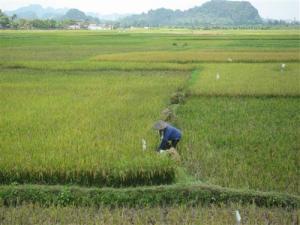Vietnam faces tough rice export competitors

As natural disasters are always the biggest obstacles of the rice export industry in Vietnam, looks like it will face a different form of challenge this year. On top of its many existing problems brought about by poor weather conditions and crop diseases, there is an anticipated pressure on the price of their exported rice resulting from the presence of increased competition with some of its rice-producing neighbours in the region, more particularly, Myanmar. Other major competitors like India and Thailand are foreseen to put more efforts in their rice exports as well. Thailand, globally known as the largest exporter, has a surplus of about 3.8 million tons of rice they are expected to sell to allow storage for the domestic farmers’ recent harvest.
As reported in Thanh Nien news, Myanmar is looking into increasing the volume of its exported rice to 1.5 million tons this year, compared to the 900,000 tons the previous year. Their prices are set at over 30% lower than Vietnam’s export prices. With the food security threats many countries are currently facing, the global rice supply is seen to rise as well. The Philippines, for instance, recently released a $1 billion budget for a program intended to boost the country’s rice production. On the other hand, Malaysia has a $700 million food security plan underway. Other countries in the region, as well as China, have developed similar efforts to increase their rice output.
According to Pham Quang Dieu, director of the Agricultural Department Information Center, Vietnam’s rice exports are now greatly dependent on big markets like Africa, Cuba, Iraq and Indonesia. As he believes that the market diversification is limited, Vietnam might face big problems if such major markets will decide to cut their imports. In fact, there is already a seen risk of decline of rice exports to Africa this year. Being the largest consumers of Vietnam’s low and medium-grade rice in 2009, accounting for 30 percent of Vietnam’s total export, it is something the industry is seriously concerned about.
Apart from that, there is an increased cancellation on existing contracts between Vietnamese exporters to certain global markets starting the end of last year amounting to hundreds of thousands of tons of rice. But Nguyen Thanh Bien, Deputy Minister of Industry and Trade, shrugs off the statistics, affirming that such will not in any way affect the export industry of the country. He claimed that delivery and payment problems have caused the cancellations and even expressed confidence that the volume of cancelled contracts is too small a fraction of the total volume of signed contracts for the year. With Vietnam’s rice exports accounting for 15 percent of the total global export market, it aims to further raise its rice production in 2010 despite the drought in certain areas and common agricultural problems.
But the high demand for rice exports in the global market still places Vietnam in a promising position. Sources from the Vietnam Food Associated sees an estimated 6 percent increase in the demand for rice this year. If the demand continues to go up, export prices will increase as well, making it favourable for rice exporters. Though marked as the world’s second-largest rice-shipper, analysts believe that the soar of Vietnam’s rice exports in 2009 were more influenced by external factors, demand for the most part, and not due to internal strengths. But steps are now also taken by the VFA to improve the country’s quality of rice. On top of efforts to help firms and farmers upgrade their storage facilities, computers and internet access will also be made available for them to easily keep an eye on safe production methods, application of advanced technologies, recent market prices, weather condition and other factors that would affect their production. An improved rice quality would only mean guaranteed income for Vietnamese farmers. However, the VFA do recognize the need to intensify attempts to seek new export markets and customers for 2010 and the coming year.
With Africa and Philippines remaining to be the expected main markets for the year, many sectors may wonder how long further the market situation remain favourable for Vietnamese rice exports. With the increasing population causing global agricultural lands to narrow rapidly, the demand for rice in the future will just only stay sharply on top.









